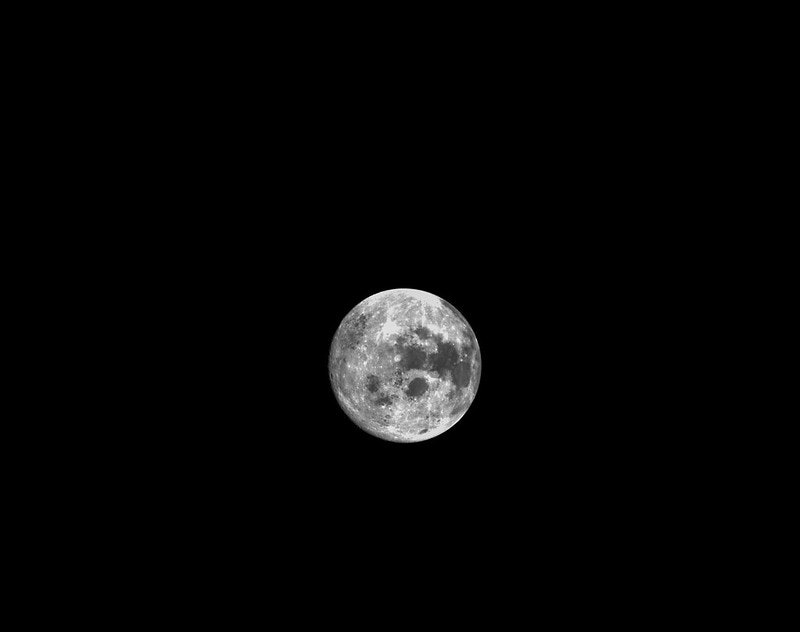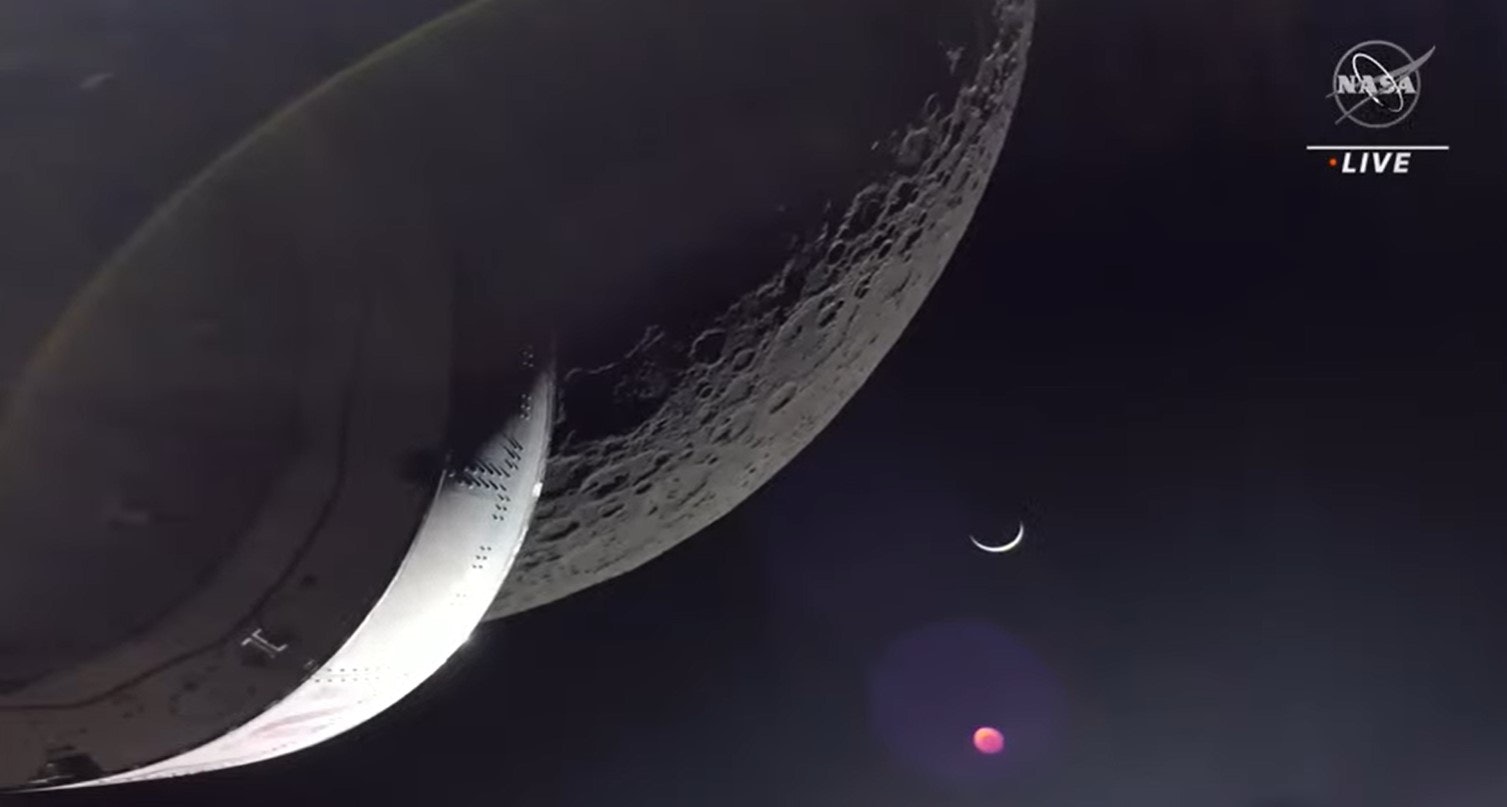
The Artemis I mission is coming back to planet Earth, NASA officials confirmed on Monday, December 5.
The space agency announced the news as its Orion capsule emerged from the dark side of the Moon. In this case, “dark” means loss of signal. During the special maneuver to come home, Orion flew behind the Moon, which blocked its signals from reaching the communications antenna infrastructure on Earth known as the Deep Space Network. Teams in the White Flight Control Room at NASA’s Mission Control in Johnson Space Center in Texas, in addition to European Space Agency (ESA) teams in the Netherlands, awaited the acquisition of signal to appear in slightly less than a half-hour after the maneuver.
If Orion successfully splashes down to Earth in six days, the capsule will get NASA one step closer to bringing astronauts to the Moon to see what Orion sees for themselves. The livestream showed a faraway crescent Earth and cratered pockets on the Moon’s surface along the edge of lunar daylight and nighttime.

Monday’s procedure is called the return powered flyby. When ESA’s European Service Module on Orion fired the engine of its Orbital Maneuvering System (OMS) at 11:43 a.m. Eastern on Monday, Orion committed to its return to planet Earth. According to NASA public affairs officer Sandra Jones, who hosted NASA’s live stream of Monday’s procedure, OMS can conduct a burn lasting as long as 16 minutes. Monday’s burn, however, lasted just 3 minutes and 27 seconds. This is nevertheless the longest OMS burn of the Artemis I mission, Jones said.
The return powered flyby burn is a deorbit burn. Orion is now targeting reentry at Earth on Sunday, December 11. If its heat shield withstands the pressures of Earth’s atmosphere, it will descend towards the Pacific Ocean and splashdown off the coast of California, where NASA teams and the U.S. Navy will be waiting to retrieve the capsule.
On Monday, Orion got as close as 80 miles from the lunar surface. At earlier press conferences about the Artemis I mission, NASA officials shared that they were hoping the spacecraft’s cameras might take images of some Apollo landing sights during this rendezvous. That awaits to be seen.
On Tuesday, December 6, Orion “will exit the lunar sphere of influence for a final time,” according to NASA’s Artemis blog.
At 12:12 p.m. Eastern on Monday, NASA acquired the signal from Orion that the burn went as expected. It took the spacecraft out of the distant retrograde orbit, a path that gave NASA a stable place to evaluate Orion’s systems.
And now, the Artemis I Orion is on the final leg of its 25.5 day trip.







